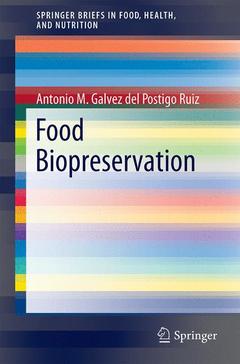Description
Food Biopreservation, 2014
SpringerBriefs in Food, Health, and Nutrition Series
Authors: Galvez Antonio, Grande Burgos María José, Lucas López Rosario, Pérez Pulido Rubén
Language: English
Subjects for Food Biopreservation:
52.74 €
In Print (Delivery period: 15 days).
Add to cart118 p. · 15.5x23.5 cm · Paperback
Description
/li>Contents
/li>Comment
/li>
The purpose of this Brief is to provide a global view of the concept of biopreservation and its potential and existing applications in the different food sectors. Biopreservation, an approach already experimented with by our ancestors, has been used empirically for centuries and now the rationale behind it is becoming increasingly popular, applied singly or in combination with novel and classical food processing technologies. The growing world population, together with the globalization of the food market and consumer demand for foods that are ready to eat, lightly preserved, fresh-tasting, and rich in flavor, nutrients, and bioactive compounds, is forcing the food industry to develop less aggressive food preservation methods.
Includes supplementary material: sn.pub/extras




